Steve Reed should reverse Angela Rayner's worst decision
The first test of his mantra, "build, baby, build".
POD! On The Abundance Agenda podcast this week, Martin digs into how the Reform Party in Lincolnshire is building… a bat tunnel of its own. Plus we speak to Executive Director of the Campaign for Science and Engineering, Dr Alicia Greated, about industrial policy and immigration. Oh, and I talk more about… this whole thing below. Listen on Apple, Spotify, YouTube, Substack, or wherever you get your pods!
So that was a weird reshuffle.
From a pure political logic perspective, I think you can understand why many of the decisions were made. I won’t go into a full analysis of why – you can read Sam for that.
But viewed individually, some of the decisions are rather odd. For example, moving Peter Kyle to the Business department is technically a promotion for him, but he seemed to be doing… pretty well at his old job in the Department of Science, Innovation and Technology (DSIT), working on things like the digital government blueprint.1
Then his replacement in that role, Liz Kendall, as far as I can tell, has never expressed any strong opinions on anything the department does. Though I hope that in time she can be persuaded to don her combat fatigues and go into battle to liberate the Postcode Address File.2
And this, of course, leaves aside the inherent absurdity of parliamentary democracy, in which ministers are appointed to make decisions in one policy area, and then every once in a while are randomly transplanted to a completely different department. Hopefully Yvette Cooper spent the weekend reading a book or two about the Israeli-Palestinian conflict.
Anyway, for my money, the most interesting move of the reshuffle was that of Steve Reed, who took over Angela Rayner’s former brief at the Ministry of Housing, Communities and Local Government (MHCLG), and, according to The Telegraph, has told officials that his mantra is “build, baby, build”.
It’s notable not because of the politics of his appointment3 – but because it presents a huge opportunity for him to correct a historically bad decision that was made by the department while Rayner was in charge. And in my view, it should be considered the first test of whether he is serious about his mantra.
But to explain exactly why, we first need to talk about… a sewage treatment works in Cambridgeshire. But I promise this will loop back to the reshuffle in a funny, yet maddening way. So let’s get started.
Do you like nerdy posts about politics, policy, infrastructure and… well, basically stuff like this? Then make sure you subscribe (for free!) to get my newsletter direct to your inbox.
Talking shit about Cambridge
Our story begins with this: Anglian Water’s proposed Waste Water Treatment Plant, which the company, and the local council, want to build just outside of Cambridge.
Cambridge is exactly the sort of place we need to be building if we want to grow the economy and drag Britain out of its economic malaise. The city has long been identified as the perfect place for expansion: it already has a world-leading university, so all we need to do is provide space for scientific research and hi-tech businesses – and more homes for people to live in.
However, a major bottleneck on Cambridge’s ability to grow is waste water. Simply put, capacity in the city is already maxed out. And horrifyingly, this has led to Anglian Water officially filing objections to projects like a major redevelopment of Cambridge Science Park, because the sewage works nearby would be unable to cope with the added demand.
That’s one of the reasons why the new plant was first proposed in 2018. Pictured in the illustration above, it would be just outside the city on Green Belt land, and Anglian Water claims that it would be operationally net-zero, ‘energy neutral’,4 and would be landscaped to create new habitats for wildlife and so on.
But this isn’t the only reason it is worth building. Here’s a map of where the current waste water plant is:
That’s right, it’s a surprisingly massive swathe of Cambridge itself. And what the council has realised is that if the waste water plant can be moved further out of town, it creates a major redevelopment opportunity where thousands of homes could be built, not too far from the rest of the city.
From an urbanist perspective, this seems like a slam-dunk to me. The current site is a fifteen-minute cycle from the city centre,5 and is right next to Cambridge North, a new train station that was opened in 2017.6 The new district that would be created, which developers have named Hartree,7 could conceivably fit 5,600 new homes, two schools and other leisure and health facilities, and the broader redevelopment of this section of the city could build as many as 8,500.
And according to the architect who designed the masterplan, Hartree would be 90% flats and cars could be “designed out” of the area. Amusingly too he also ups the ante on the ‘15-minute city, by declaring that Hartree would be a ‘5-minute city’.
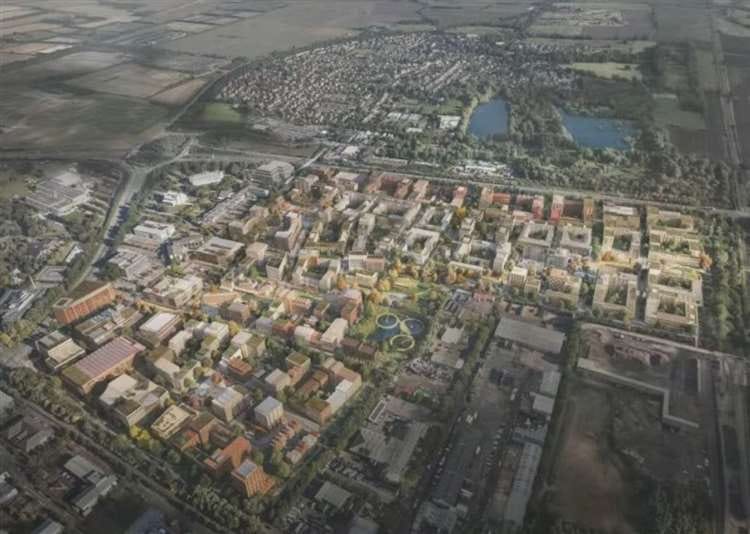
This is all to say the Hartree plan is extremely good stuff and it’s hard to think of other projects that tick quite so many boxes for how to develop in the right way.
So where are we at now? The plans spent the last seven years chugging through Britain’s notoriously sluggish planning system. Most notably, in 2021 the decision was taken to declare the project ‘Nationally Significant’, which took the planning decisions out of the hands of the local council, and handed them to the government in Westminster to make the final call.
And in this case, because the project relates to waste water treatment, the final decision on the ‘Development Consent Order’ (DCO) went to the Environment Secretary, who finally on 8 April 2025 approved the project – which meant that it looked like it was going to happen!
Except… that’s when it all started to go wrong.
Departmental politics
Just three weeks ago, Angela Rayner’s department, MHCLG, made a very annoying decision. It decided to withdraw the previously agreed cash to fund the project, which was expected to cost £400m in total. Anglian Water and the council had been expecting the government to chip in £277m from the Housing Infrastructure Fund to help pay for it.8
Unfortunately, this meant that the entire plan – to build the new plant and the Hartree development – was essentially dead in the sewage water. After seven years of planning, which itself cost £80m (including £13m of the council’s own money), it wouldn’t be moving forward.
The reason given, according to Anglian Water, is that the projected cost of the project ballooned as a result of the rising cost of materials and labour, a consequence of the turmoil in global supply chains. Inside government, it was determined that the project was no longer considered value for money.
So it looked like it was all over. Anglian Water started talking about the project in the past tense, and how it would figure out how to move forward without the new sewage works. And the inevitable NIMBY campaign of Cambridgeshire villagers opposed to the new Green Belt site organised a victory party at the village hall.
But then Angela Rayner resigned, and the Cabinet was reshuffled, changing up the personnel involved in the interdepartmental politics.
And here’s where it gets interesting.
As we know, Steve Reed is now the Secretary of State for MHCLG – the department that shot down the funding just a few weeks ago. And this is notable, because who was the Environment Secretary who gave the plan the thumbs-up back in April?
It was some bloke called… Steve Reed.
So I can’t help but wonder if the new MHCLG Secretary might want to reverse the decision of his predecessor?
As far as I can tell, there are no legal barriers to reviving the project now.9 The DCO that was granted in April remains valid. All Reed would need to do to reverse course is make the political and financial decision to once again put up the cash.
Treasury Brain
I wish this was the end of the piece, and that the conclusion is simple. Steve Reed should just do the thing that Steve Reed previously wanted to do.
However, in reality it might not be that easy, and that’s because much as Loki was merely a frontman for Thanos in the first Avengers film, it’s possible that Angela Rayner and MHCLG were only really doing the bidding of… His Majesty’s Treasury.
To be clear, I am speculating a bit here, as we don’t know the full reason why the funding was withdrawn.
However, what we do know is that publicly, when the plug was pulled, MHCLG told the BBC that “It is vital that taxpayers' money is used responsibly, and cost projection increases have made the relocation proposal unaffordable, with the additional £400m now required beyond the budget available.”
Exactly how “unaffordable” was arrived at isn’t entirely clear. But usually decisions like this are not just down to the whims of whichever official is skimming through the spreadsheet. Instead, the Treasury and other government departments have robust processes for evaluating the business cases behind each spending proposal.
And unfortunately in this case, we don’t know exactly what that case looks like, as in 2023 someone sent in a freedom of information request10 to try and obtain it, but it was denied, citing commercial confidentiality.
But if you’ll allow me to wildly speculate, this stinks to me of a disastrous case of ‘Treasury Brain’ – the term used by seasoned Westminster types to describe how the Treasury will almost pathologically focus on the bottom line of the budget sheet, without taking broader considerations into account like the strategic case for building infrastructure.
So what I’m guessing happened here is that at some point in the ‘value for money’ process, someone plugged the new, inflated cost projections into the equation – and as a result, computer said no.
If this is how the decision was made, then I think it is a really disastrous decision. Though building the new Cambridge sewage works might be expensive in the narrow sense of what it costs to build a sewage works, that doesn’t necessarily take into account the strategic benefits of doing so. Like, just to pick one example completely at random, how building the new sewage works would unlock an enormous site for thousands of homes, and would enable Cambridge to become home to more high-growth tech businesses, and make a disproportionate impact on the national economy.
And what makes me think this explanation is plausible is the Treasury’s own assessment of how it calculates ‘value for money’, known the Green Book. For example, here’s what the most recent review of the Green Book, published in June, found:
Second, stakeholders noted that it was often hard to express the strategic contribution of an individual project in a single project business case. This is because the Green Book is generally written to support the appraisal of individual projects and programmes. However, the benefits of different projects in a place, such as transport and housing, are often mutually reinforcing and greater than the sum of their parts.
Sounds familiar, right?
As I say, I realise this is very speculative. Perhaps there is some other explanation as to why the money was pulled? I don’t know the answer.
But I do think there’s a clear case here for the new MHCLG Secretary, Steve Reed, to revisit the decision and either reverse it, or offer a more detailed explanation for what exactly happened.
There’s no reason the politicians can’t overrule the value for money process. Even if the computer says no, it’s possible to be politically brave and make the right decisions for strategic reasons. And if we want the British economy to grow, we need strategic infrastructure projects in our most productive cities to actually happen.
That’s why we need Cambridge to expand.
So let’s build, baby, build.
If you enjoy nerdy articles about politics, policy, infrastructure, transport, tech and media, then subscribe my newsletter (for free!) to get more of this sort of thing direct to your inbox.
Oh, and I talk more about the above on The Abundance Agenda podcast this week!
He must be experiencing some whiplash in the new role too, as according to Politico he’s off to China today to re-open trade talks, on a long-scheduled trip that his predecessor was scheduled to take. No pressure!
Speaking of which, what’s the deal with moving Jonathan Reynolds? He’s one of the government’s best communicators so it seems strange to move him to a less prominent role.
Though interestingly, he’s seen as close to Starmer, and was something of a mentor to Morgan McSweeney when they were fighting factional battles in Lambeth.
It would apparently use biogas to generate electricity, which would net out as neutral over the course of a year.
Don’t forget Cambridge is, unusually for Britain, a very cycling friendly and cycling-oriented city.
In fact the reason that a new station was built there is because of the potential for regeneration in the area.
I think this is named after Douglas Hartree, a Cambridge-born physicist who did… something complicated with electrons. Update: I’m told by a very helpful person in the comments that Hartree was in fact named after Eva Hartree, the first woman to be Mayor of Cambridge – who happened to be Douglas Hartree’s mother.
The original ask was £227m, but costs escalated since the original plans were made.
This is not legal advice and you would be insane to take legal advice from me, as the only legal training I’ve had is watching A Few Good Men about ten years ago.
It was actually an Environmental Information Regulations request, which is functionally pretty much the same thing as FOI but is technically under a different law and is harder for the government to wriggle out of answering.



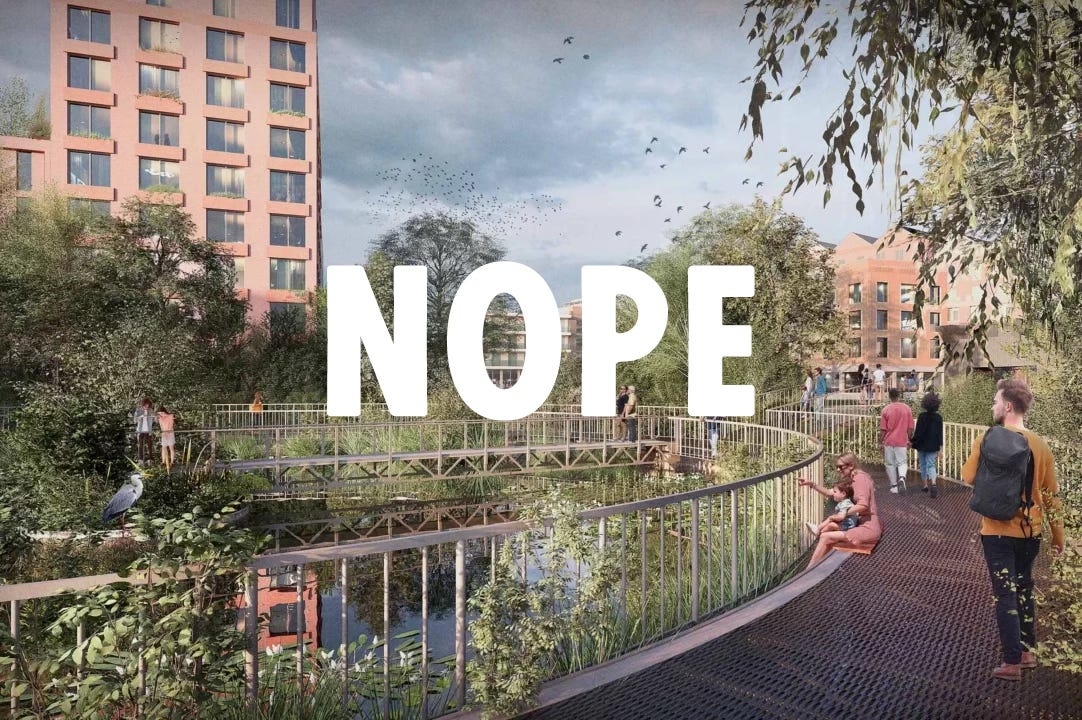

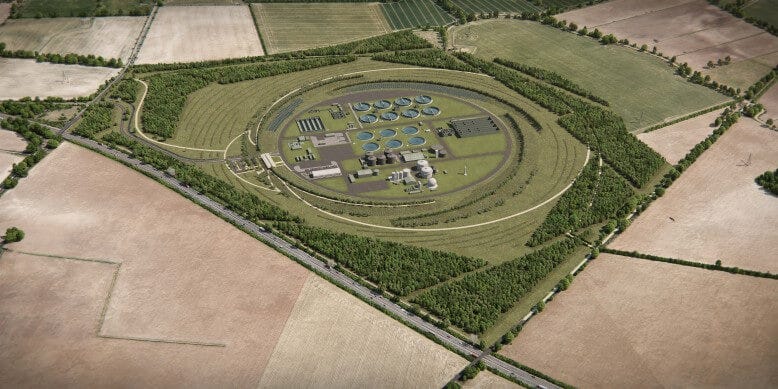
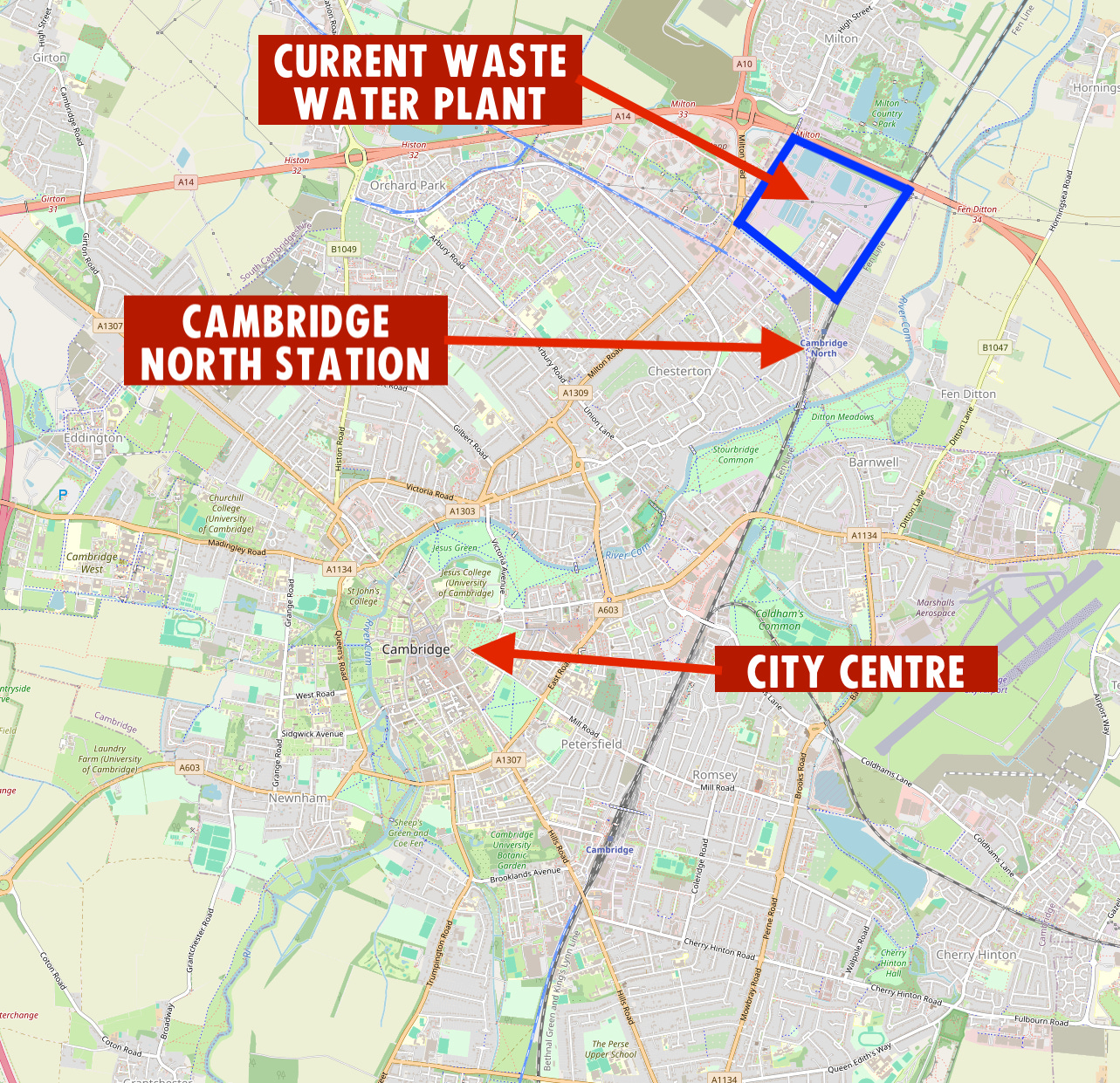
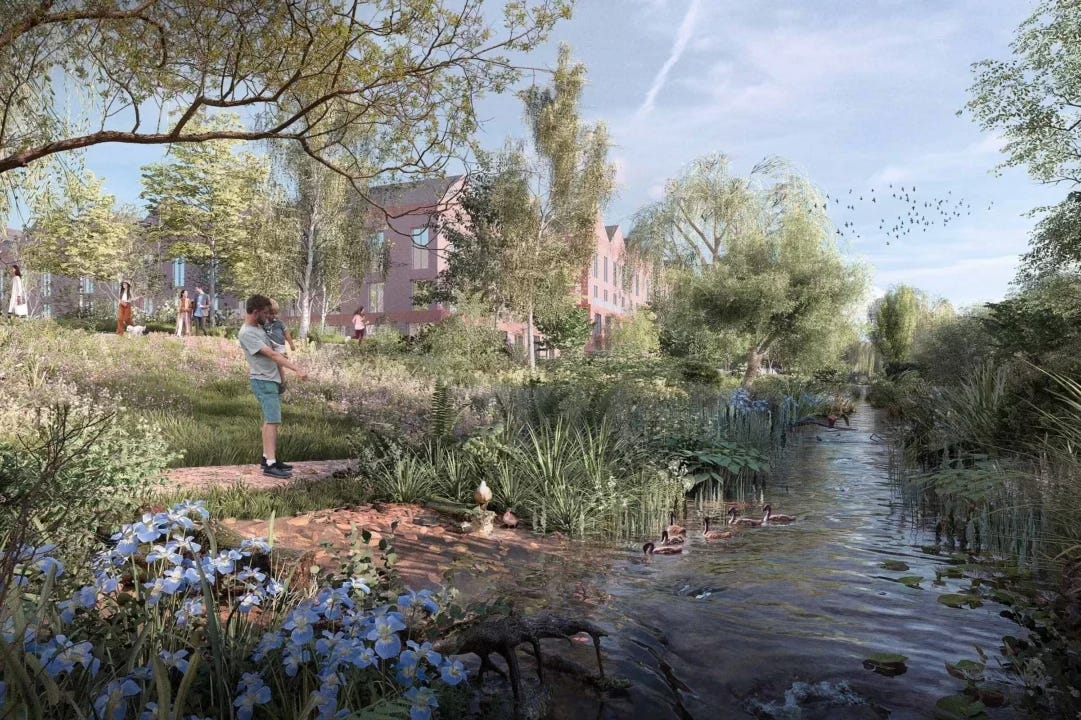
Point 7: Hartree was named for Eva Hartree (née Rayner!), the first Lady Mayor of Cambridge in 1924-25 and mother to Douglas Rayner Hartree. Douglas was a very interesting mathematician, physicist and computer pioneer.
I’ve lost faith that Labour will solve the housing crisis under Starmer - there just doesn’t seem to be the strategic direction or sense of urgency, despite things going in the right direction.
I think Reed is getting a hugely unfair time from lots of YIMBYs though because of his opposition to the Johnson-era planning reforms, which, let’s not forget, predated Starmer’s embrace of planning reform in late 2022. He’s a party man and if the party line is planning reform then I think he’ll try his best.